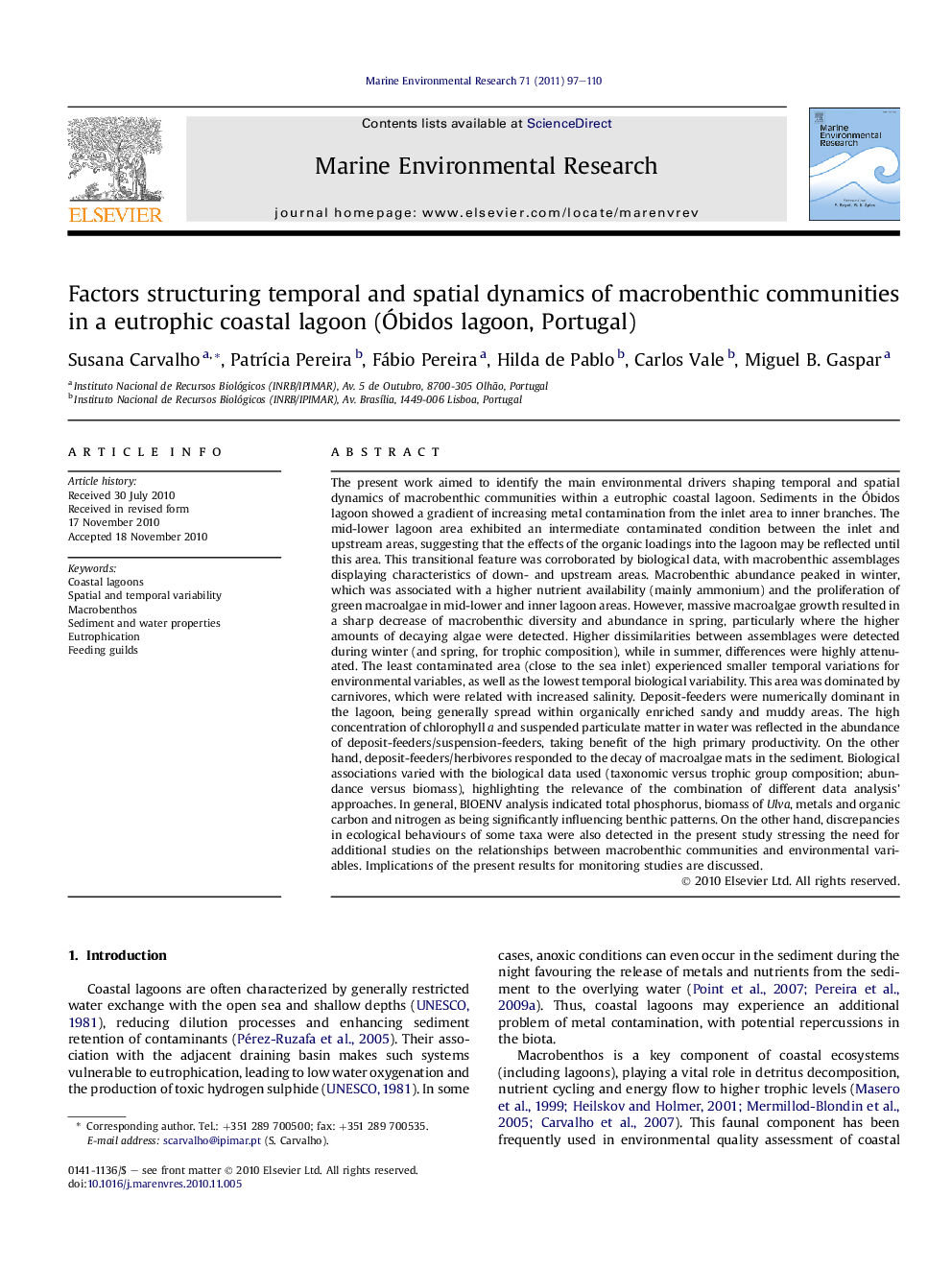| کد مقاله | کد نشریه | سال انتشار | مقاله انگلیسی | نسخه تمام متن |
|---|---|---|---|---|
| 4551180 | 1328280 | 2011 | 14 صفحه PDF | دانلود رایگان |

The present work aimed to identify the main environmental drivers shaping temporal and spatial dynamics of macrobenthic communities within a eutrophic coastal lagoon. Sediments in the Óbidos lagoon showed a gradient of increasing metal contamination from the inlet area to inner branches. The mid-lower lagoon area exhibited an intermediate contaminated condition between the inlet and upstream areas, suggesting that the effects of the organic loadings into the lagoon may be reflected until this area. This transitional feature was corroborated by biological data, with macrobenthic assemblages displaying characteristics of down- and upstream areas. Macrobenthic abundance peaked in winter, which was associated with a higher nutrient availability (mainly ammonium) and the proliferation of green macroalgae in mid-lower and inner lagoon areas. However, massive macroalgae growth resulted in a sharp decrease of macrobenthic diversity and abundance in spring, particularly where the higher amounts of decaying algae were detected. Higher dissimilarities between assemblages were detected during winter (and spring, for trophic composition), while in summer, differences were highly attenuated. The least contaminated area (close to the sea inlet) experienced smaller temporal variations for environmental variables, as well as the lowest temporal biological variability. This area was dominated by carnivores, which were related with increased salinity. Deposit-feeders were numerically dominant in the lagoon, being generally spread within organically enriched sandy and muddy areas. The high concentration of chlorophyll a and suspended particulate matter in water was reflected in the abundance of deposit-feeders/suspension-feeders, taking benefit of the high primary productivity. On the other hand, deposit-feeders/herbivores responded to the decay of macroalgae mats in the sediment. Biological associations varied with the biological data used (taxonomic versus trophic group composition; abundance versus biomass), highlighting the relevance of the combination of different data analysis’ approaches. In general, BIOENV analysis indicated total phosphorus, biomass of Ulva, metals and organic carbon and nitrogen as being significantly influencing benthic patterns. On the other hand, discrepancies in ecological behaviours of some taxa were also detected in the present study stressing the need for additional studies on the relationships between macrobenthic communities and environmental variables. Implications of the present results for monitoring studies are discussed.
Research highlights
► Total phosphorus, biomass of Ulva, metals, organic carbon and nitrogen were significantly related with macrobenthic patterns.
► Massive macroalgae growth resulted in a sharp decrease of macrobenthic diversity and abundance.
► The nature of biological data used was reflected in the biological patters.
► Relationship between biological and environmental data highlighted some discrepancies in ecological behaviours of dominant taxa.
Journal: Marine Environmental Research - Volume 71, Issue 2, March 2011, Pages 97–110